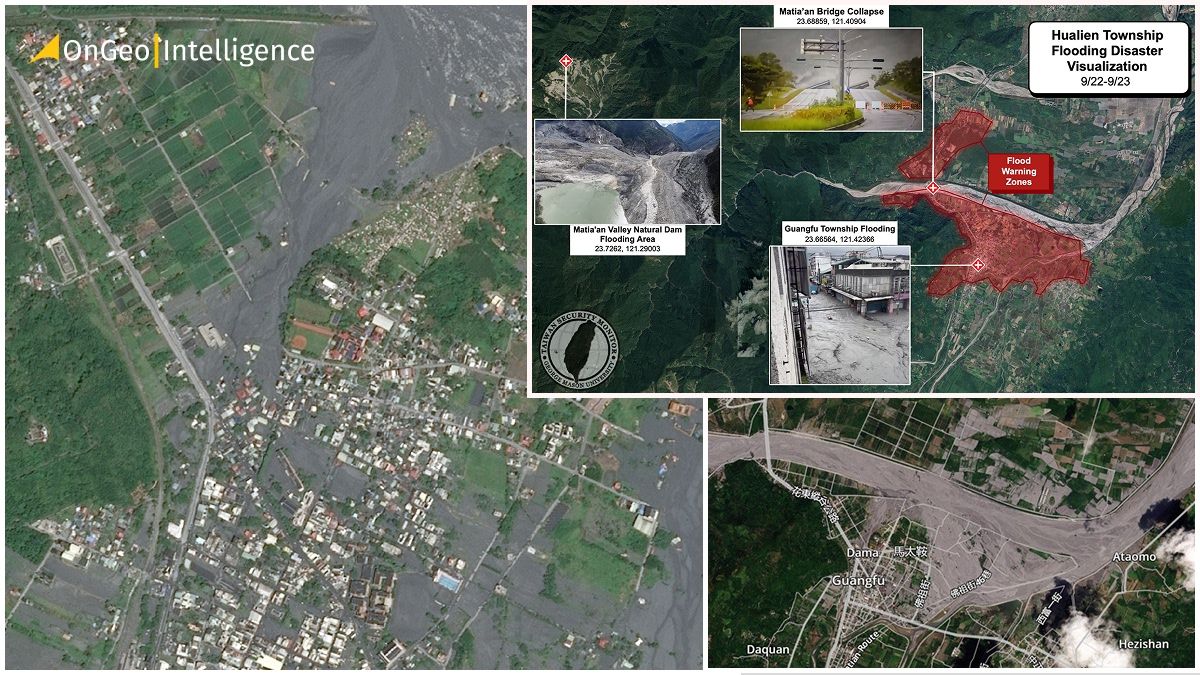
Super Typhoon Ragasa: Satellite Imagery Reveals Devastation Across Taiwan and Hong Kong
Across Southeast Asia, grapples with the aftermath of Super Typhoon Ragasa - the most powerful storm to strike the planet this year. Packing winds exceeding 200 km/h (124 mph) at its peak, Ragasa tore through Taiwan and Hong Kong with unrelenting fury, claiming at least 14 lives on the island and injuring over 100 in the bustling financial hub. What began as a monstrous cyclone in the Pacific has now weakened into a tropical storm, but its scars - flooded towns, shattered infrastructure, and displaced families - will linger for months. In this comprehensive report, we delve into the human toll, heroic recovery efforts, and the broader implications of a warming world fueling ever-intensifier superstorms.
Taiwan Bears the Brunt: A Deluge of Destruction in Hualien County
Taiwan, often called the "frontline" against Pacific typhoons due to its geographic position, absorbed the storm's worst blows. Local authorities confirmed 14 fatalities from Ragasa's rampage, revising down an initial count of 17 after discovering duplicate reports amid the chaos. Search and rescue teams continue scouring rugged terrain for 33 missing individuals, many feared trapped under landslides triggered by torrential rains that dumped up to 800 mm (31 inches) in just 24 hours in Hualien County.
The epicenter of the devastation was the small town of Guangfu, where flash floods turned streets into raging rivers, burying homes in a slurry of mud, rocks, and uprooted trees. Rescue operations are in full swing, with volunteers and emergency responders working around the clock to clear pathways and secure unstable hillsides.
Infrastructure woes compound the crisis. Guangfu's railway station has miraculously reopened, allowing limited commuter service to resume and ferry in supplies. However, the main access road remains severed after a vital bridge collapsed under the weight of floodwaters, stranding hundreds and complicating aid delivery. Engineers estimate repairs could take weeks, forcing reliance on helicopters for remote areas.
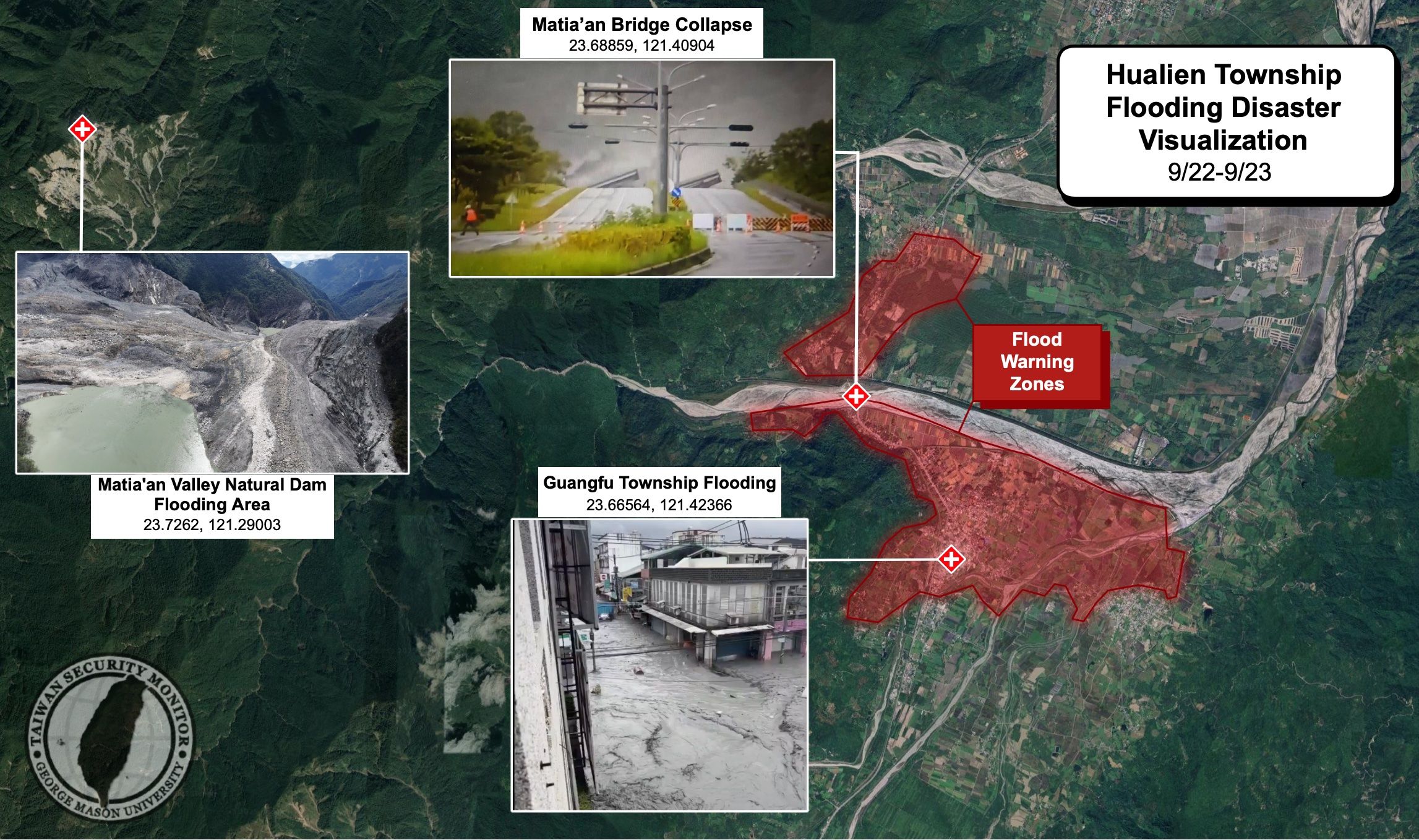
President Lai Ching-te, in a show of solidarity, pledged on Wednesday to donate a monthly portion of his presidential salary to a fund aiding displaced residents. "This is not just about rebuilding structures - it's about rebuilding lives," he said in a televised address. True to his word, Lai was scheduled to visit the hardest-hit zones in Hualien late Thursday evening, marking a hands-on commitment amid criticism that early warning systems, while advanced, couldn't fully mitigate the storm's scale.
Typhoon Ragasa's intensity - classified as a Category 5 equivalent on the Saffir-Simpson scale - eclipses even the infamous Typhoon Morakot in 2009, which killed over 700 in Taiwan. Climate experts warn that rising sea temperatures, a byproduct of global warming, are supercharging these events, making 2025's storm season a grim harbinger of what's to come.
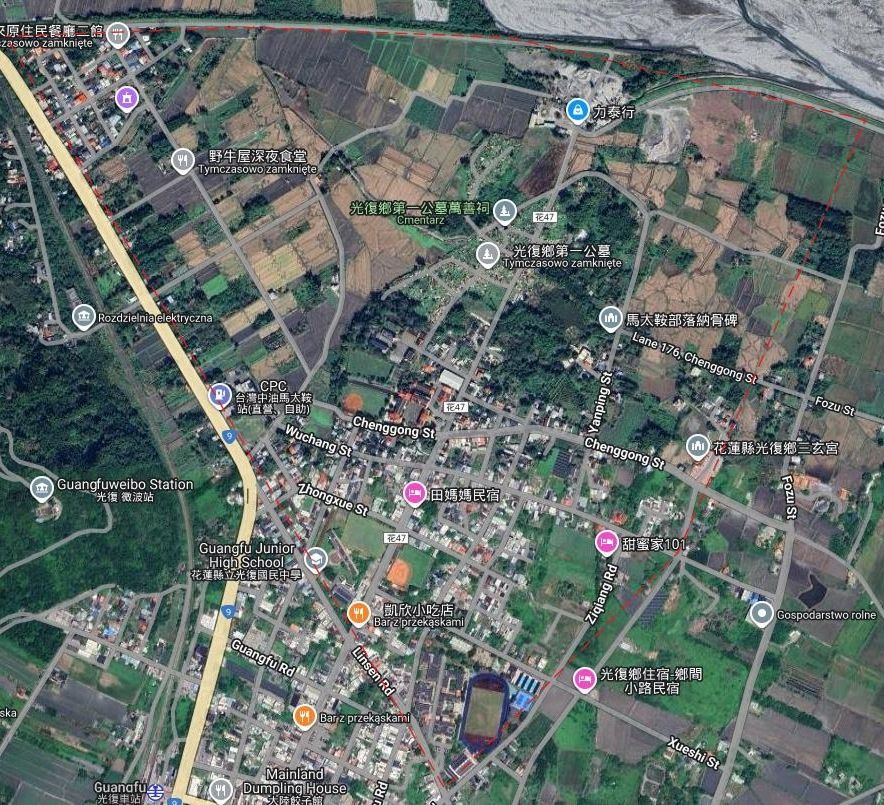
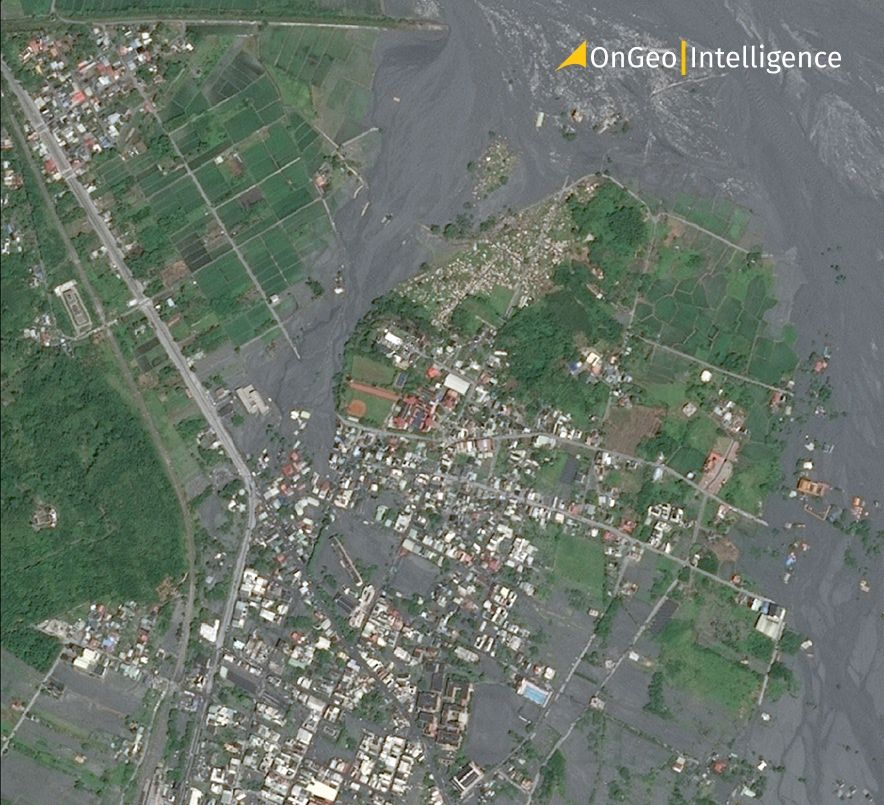
Guangfu - before and after
Satellite Insights: OnGeo Intelligence Reveals the Scale of Destruction
Newly released satellite imagery from OnGeo Intelligence has laid bare the staggering extent of Ragasa’s wrath. High-resolution images captured over Taiwan’s Hualien County show entire neighborhoods in Guangfu submerged under muddy floodwaters, with vast swathes of farmland obliterated and highways severed by landslides. In Hong Kong, the imagery highlights urban flooding along Victoria Harbour, where waterlines reached unprecedented heights, and coastal infrastructure suffered significant erosion. These visuals, processed with advanced analytics, are aiding disaster response teams in prioritizing relief efforts and mapping safe evacuation routes.
View the full satellite imagery report
Satellite Imagery Report: Guangfu, Hualien County, 976, Taiwan
Hong Kong's High-Rise Havoc: Floods, Closures, and a Swift Rebound
Further south, Hong Kong-a densely packed metropolis of 7.5 million -faced its own baptism by fire. The city hoisted its highest Typhoon Signal No. 10 for the first time in five years, grinding life to a halt as Ragasa's outer bands lashed skyscrapers with gale-force winds and biblical downpours. Schools, offices, and businesses shuttered for 36 hours, with the iconic Hong Kong International Airport suspending flights and stranding thousands of travelers.
The airport roared back to life, but the cleanup is far from over. Officials reported more than 100 injuries, mostly from slips on rain-slicked streets or debris-related accidents, though no fatalities were recorded - a testament to robust evacuation protocols. Emergency services are battling a patchwork of urban flood zones, clearing fallen trees from major arteries like Nathan Road and pumping out water from basements.
Schools and some offices remained closed as authorities assessed structural damage, with wind speeds gusting to 180 km/h (112 mph) peeling off billboards and shattering windows across Kowloon. The Hong Kong Observatory hailed the city's resilience, noting that enhanced seawalls - built post-2018's Typhoon Mangkhut - prevented worse inundation. Still, economic losses are mounting: preliminary estimates peg direct damages at HK$5 billion (US$640 million), hitting tourism and retail hardest.
As Ragasa made landfall near Guangdong Province in mainland China late Wednesday, it rapidly downgraded to a tropical depression, sparing the mainland a full-scale assault. Lingering rains, however, pose ongoing flood risks in the Pearl River Delta.

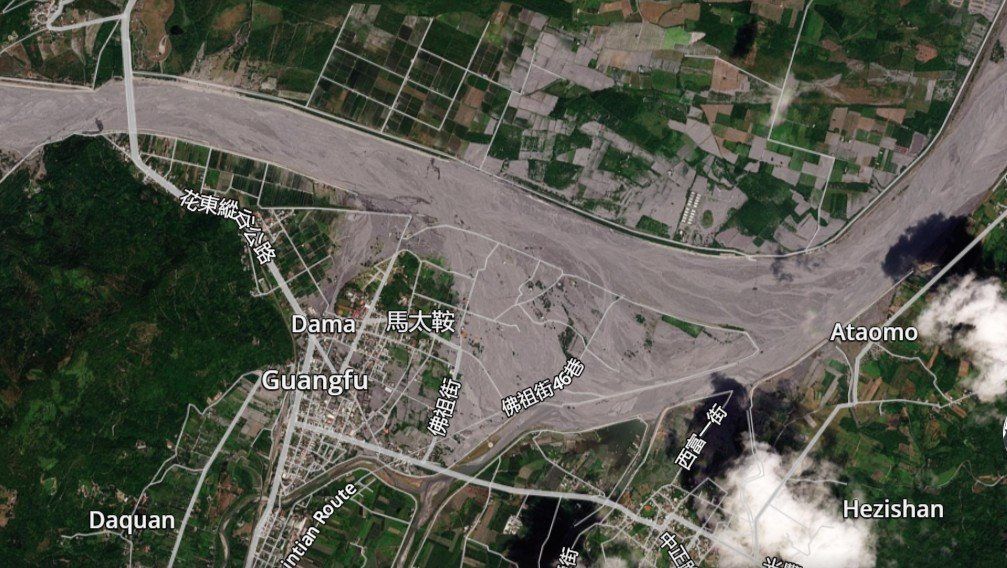
Guangfu - before and after, source: planet.com
Global Context: Why Ragasa Signals a New Era of Extreme Weather
What elevates Super Typhoon Ragasa from a regional crisis to a global wake-up call? Meteorologists at the Joint Typhoon Warning Center declared it the strongest cyclone worldwide in 2025, surpassing Atlantic Hurricane Milton's peak intensity by 15 knots. Its rapid intensification - gaining strength equivalent to a major hurricane in under 24 hours - mirrors a disturbing trend linked to climate change. Warmer oceans act as fuel, allowing storms to grow bigger, faster, and more destructive.
In Southeast Asia, a hotspot for typhoons, this year's activity has been relentless: Ragasa follows closely on the heels of Typhoon Ampil in August, which battered the Philippines. Aid organizations like the Red Cross are stretched thin, calling for international support to bolster resilient infrastructure - from elevated bridges in Taiwan to flood barriers in Hong Kong.
Global Impact and Climate Concerns
Ragasa’s intensity and the wide area it affected highlight how extreme weather events are becoming more frequent and severe due to climate change. Scientists warn that storms of this scale will be more common, posing serious challenges for emergency preparedness and disaster response.